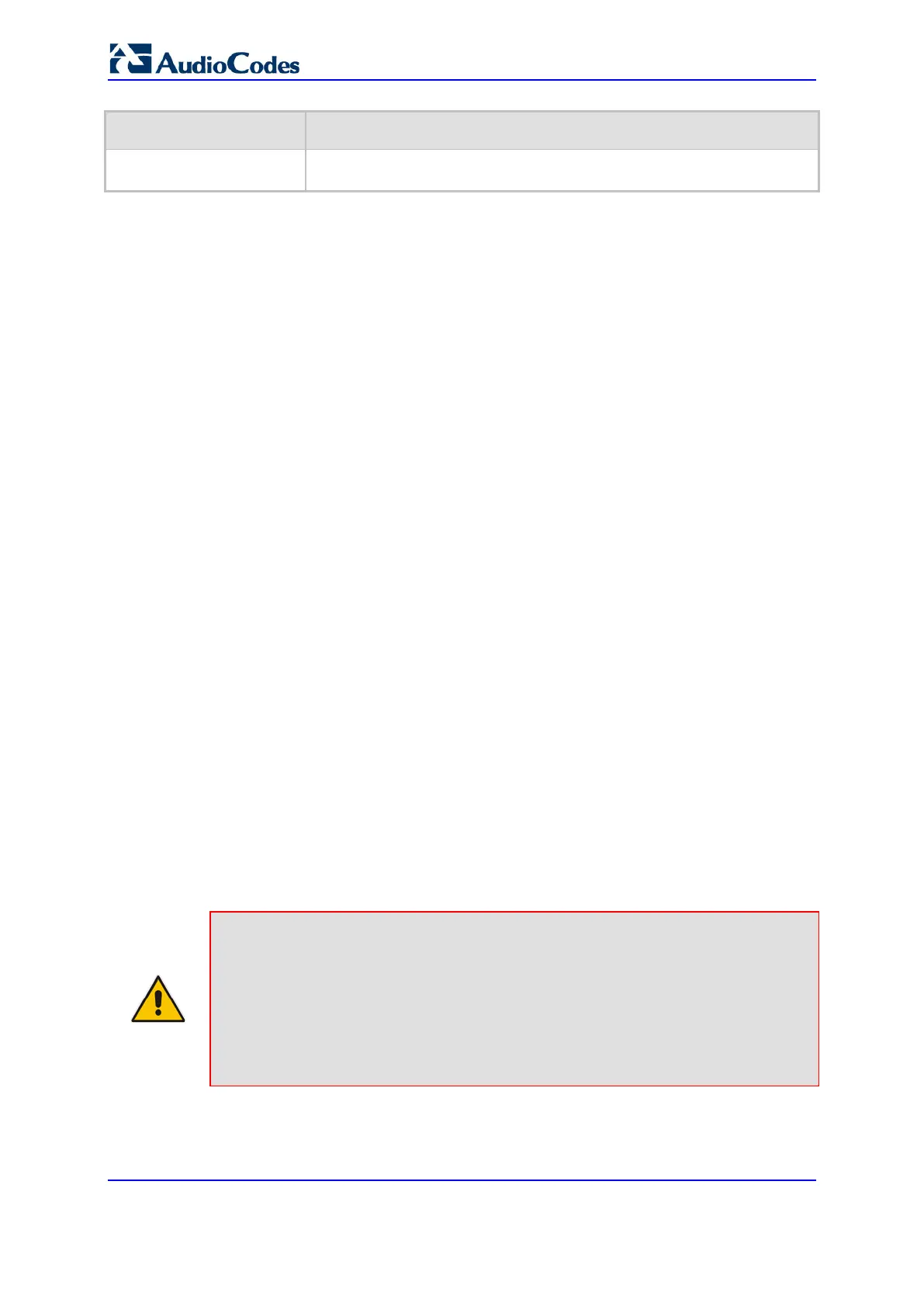User's Manual 380 Document #: LTRT-10632
Mediant 800B Gateway & E-SBC
Parameter Description
Note: The field is applicable only to Gateway-type IP Groups (i.e., the
'Type' parameter is configured to Gateway).
17.5 Configuring Proxy Sets
The Proxy Sets table lets you configure up to 102 Proxy Sets. A Proxy Set defines the
address and transport type (e.g., UDP or TCP) of a SIP server (e.g., SIP proxy and SIP
registrar server). The Proxy Set represents the destination (address) of the IP Group
configuration entity. Each Proxy Set can be configured with up to 10 addresses configured
as an IP address and/or DNS host name (FQDN), enabling you to implement load
balancing and redundancy (Proxy Hot-Swap feature) between multiple servers. Each Proxy
Set can be assigned a specific SSL/TLS certificate the (TLS Context), enabling you to use
different TLS certificates per SIP entity (IP Group). In addition, each Proxy Set must be
assigned a SIP Interface (and SRD), which determines, amongst others, the device's local
network interface through which communication with the Proxy Set is done.
You can enable the device's keep-alive feature per Proxy Set, which determines whether
proxies (addresses) configured for the Proxy Set are online or offline. If offline, the device
will not route the call to the specific proxy. You can configure the device to send either SIP
OPTIONS or REGISTER messages for the keep-alive. The keep-alive feature is required
when using the proxy load-balancing or redundancy feature. For load-balancing, the device
performs keep-alive on all proxies. For Parking-type redundancy, the device performs
keep-alive only on the currently active proxy. For Homing-type redundancy, the device
performs keep-alive on the current proxy as well as the "main" proxy. When using SIP
OPTIONS, you can configure the device to consider the proxy as offline if specific SIP
response codes are received from the keep-alive messages. To ensure that a previously
offline proxy is now online, you can configure the number of required consecutive
successful keep-alive messages (SIP OPTIONS only) before the device considers the
proxy as being online. This mechanism avoids the scenario in which the device falsely
detects a proxy as being online when it is actually offline, resulting in call routing failure. To
view the connectivity status of Proxy Sets, see Viewing Proxy Set Status on page 60.3.
You can also enable the device to classify incoming SBC SIP dialogs to IP Groups, based
on Proxy Set. If the source address of the incoming SIP dialog is the same as the address
of a Proxy Set, the device classifies the SIP dialog as belonging to the IP Group that is
associated with the Proxy Set.
To use a configured Proxy Set, you need to assign it to an IP Group in the IP Groups table
(see 'Configuring IP Groups' on page 365). When the device sends INVITE messages to
an IP Group, it sends it to the address configured for the Proxy Set. You can assign the
same Proxy Set to multiple IP Groups (belonging to the same SRD).
Note:
• It is recommended to classify incoming SIP dialogs to IP Groups, based on the
Classification table (see Configuring Classification Rules on page 701) instead of
based on Proxy Set.
• You can view the device's connectivity status with proxy servers in the Tel-to-IP
Routing table, for Tel-to-IP routing rules whose destination is an IP Group that is
associated with a Proxy Set. The status is only displayed for Proxy Sets enabled
with the Proxy Keep-Alive feature.
The Proxy Set is configured using two tables, one a "child" of the other:
Proxy Sets table: Defines the attributes of the Proxy Set such as associated SIP

